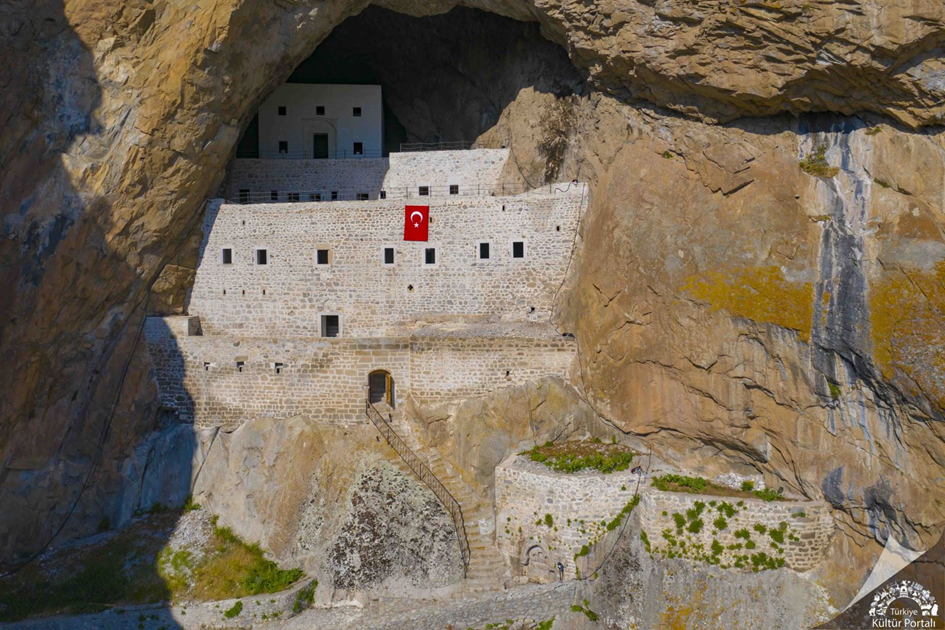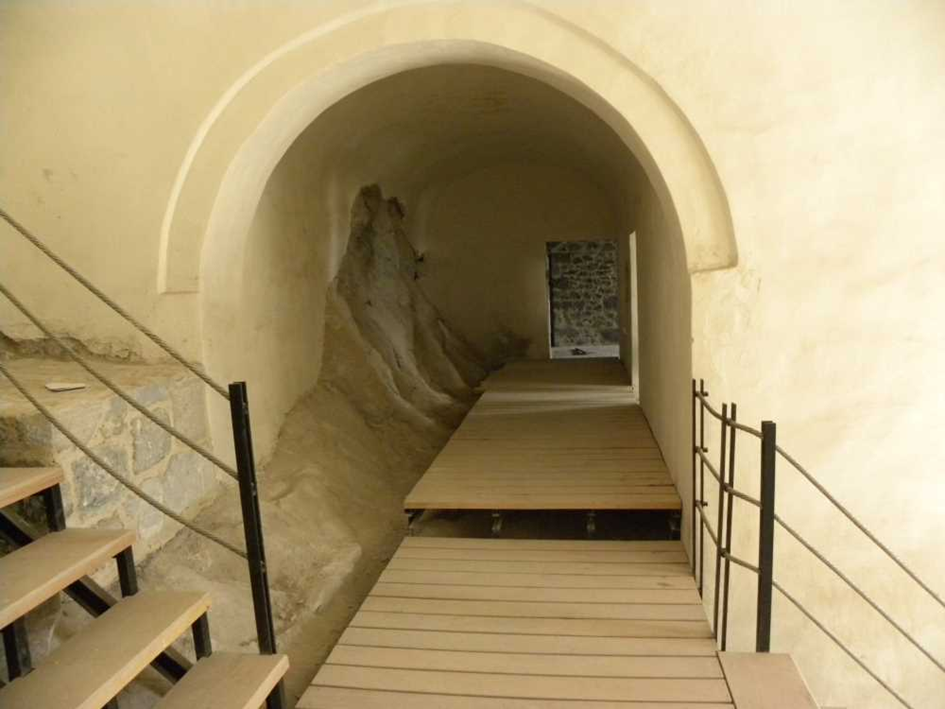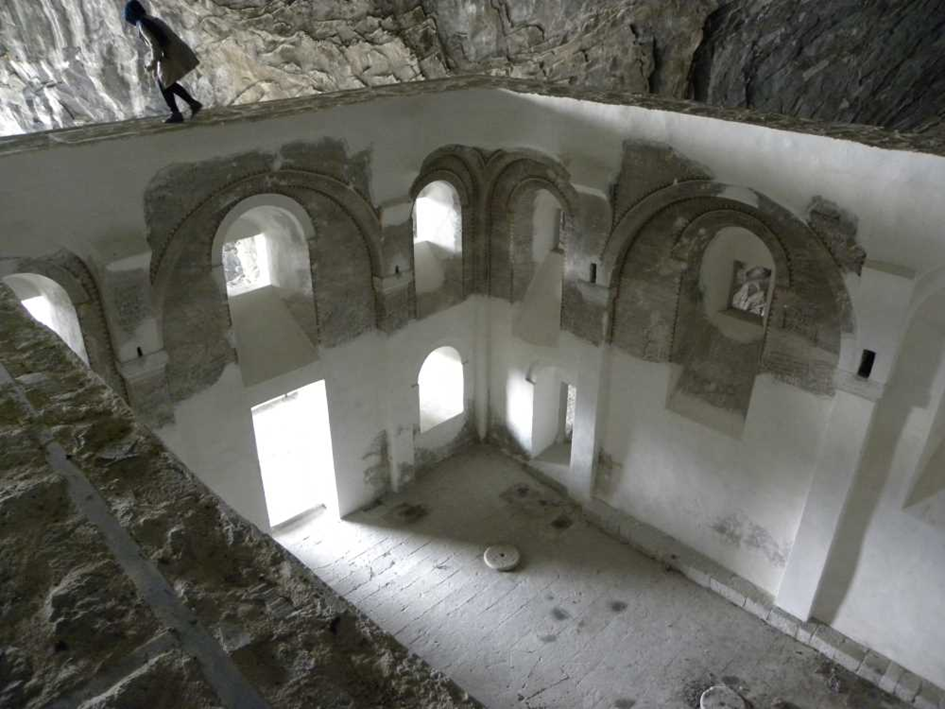The Monastery of the Virgin Mary is one of the historical buildings of the Black Sea Region and is located 11 kilometers east of Şebinkarahisar district of Giresun province, in the Kayadibi Neighborhood of Sarıyer Village, in the middle of a steep and steep cliff. Due to its geographical location, it has a similar layout to the Sumela Monastery in Trabzon. Dating back to the Byzantine period, the structure was largely destroyed and the ruins that survive today are the product of an extensive renovation process carried out in the 19th century.

Virgin Mary Monastery (Turkiye Culture Portal)
Historical Process and Production Periods
According to written sources, the construction of the monastery dates back to 481-490 AD. However, no archaeological or epigraphic evidence from this period has been identified to date. The monastery was damaged by a major fire in the 19th century, after which it was restored and restored to its present form. In this respect, it is seen that the monastery reflects the characteristics of late restoration rather than the original Byzantine architecture.
Architectural Structure and Spatial Stages
The Monastery of the Virgin Mary is a building complex consisting of four main levels. Carved into the natural rock, it has a multi-layered plan with different functional areas:
First Stage
The entrance to the monastery is through a single-leaf door with a flat round arch on the west façade. The stone structures on this level are remarkable and it is understood from the various drainage troughs that the spaces here were used as bathrooms, laundries and toilets.
Second Stage
This section forms the main mass that carries the central functions of the monastery. It is accessed through a round arched doorway. The kitchen area with a stove and oven is connected to the dining hall through an opening in the north wall. There is a storage space below the dining hall. In this section there is also the room of the "kominos", the administrative officer.
Third Stage
There is a large terrace on this level, which is reached by a staircase from an arched passage opening eastward from the central section. On the north side of the terrace there are small cell-type rooms where the monks met their needs such as hermitage, rest and sleep.
Fourth Stage
It forms the uppermost area of the monastery. In this area, there is a basilica type church with a rectangular plan and three apses located in the east-west direction. The entrance to the church is through a rectangular opening on the west façade. The east façade of the church is adjacent to the natural rock. The apse section is raised by three steps from the naos section and a simple ornamentation approach was adopted. There is also a cloister area at this level.
Building Materials and Construction Techniques
Most of the building is made of local rubble stones and smooth cut stones were used on some facades and corners. The ceiling coverings are generally provided with barrel vaults. In some parts of the complex there are remains of paintings on the interior surfaces. The monastery consists of thirty-two rooms in total and the various buildings are connected to each other by stairs.

Virgin Mary Monastery (Turkiye Culture Portal)
Other Structures and Complex Elements
At the front of the monastery there is a water cistern (ayazma) on the left and a fountain built of cut stone on the right. In different parts of the complex there is a chapel (small church), mashatlik (burial ground), garden and reception hall (room). Functionally, the building has a holistic monastic layout that combines dormitories, classrooms, worship space, and areas for daily life.
Restoration and Conservation
The Virgin Mary Monastery, which was largely destroyed, was restored by the Governorship of Giresun and the Ministry of Culture and Tourism in 2013 and 2014. It was registered as a first degree natural and archaeological site. In 2014, it was declared an archaeological site by the Ministry of Culture and Tourism and opened to tourism.

Virgin Mary Monastery (Turkiye Culture Portal)
Transportation
Located approximately 126 kilometers from Giresun city center, the monastery is accessible by land. Regular vehicle transportation is provided to Kayadibi Neighborhood of Sarıyer Village, where the building is located.


